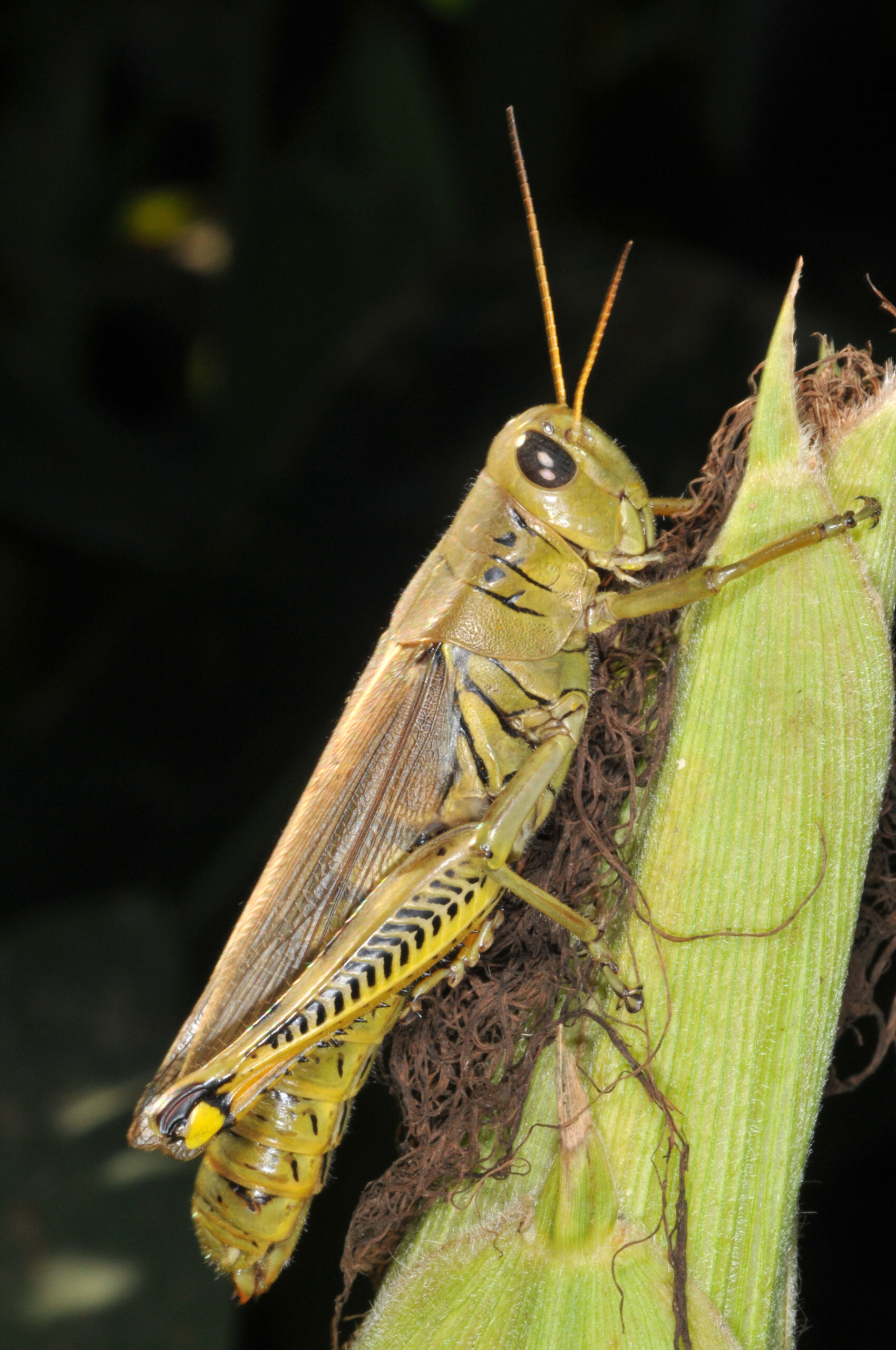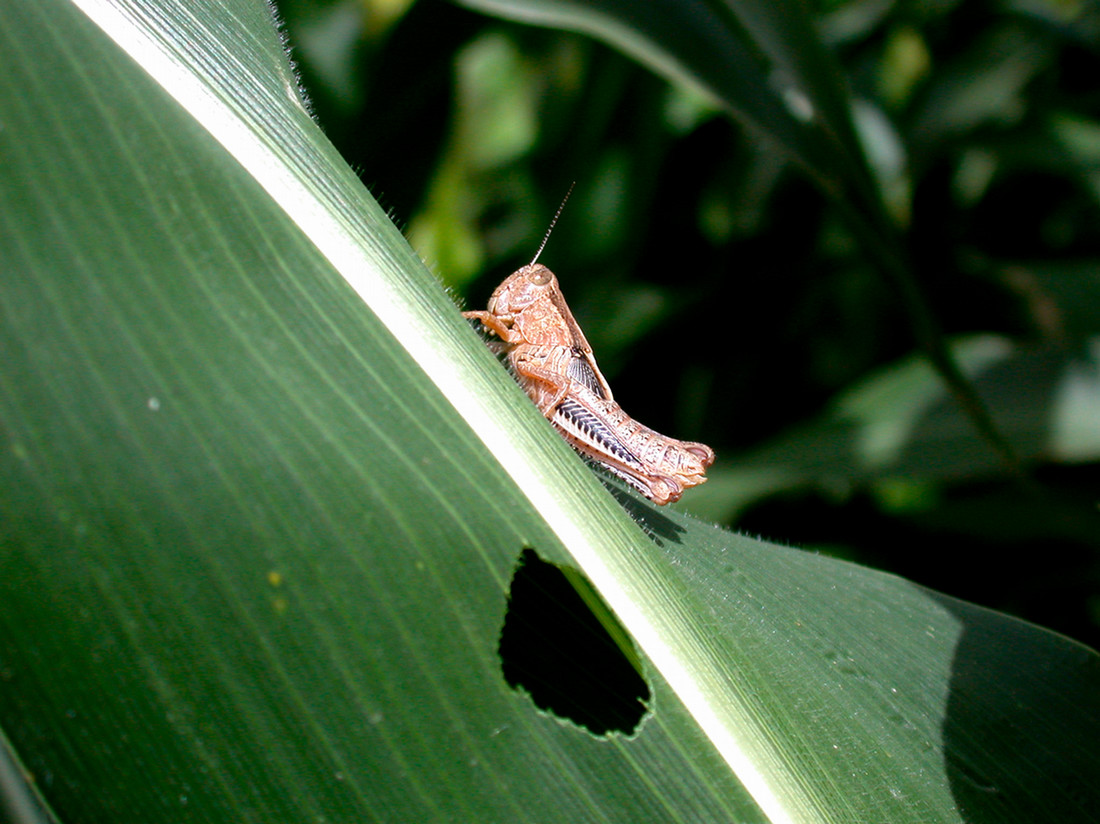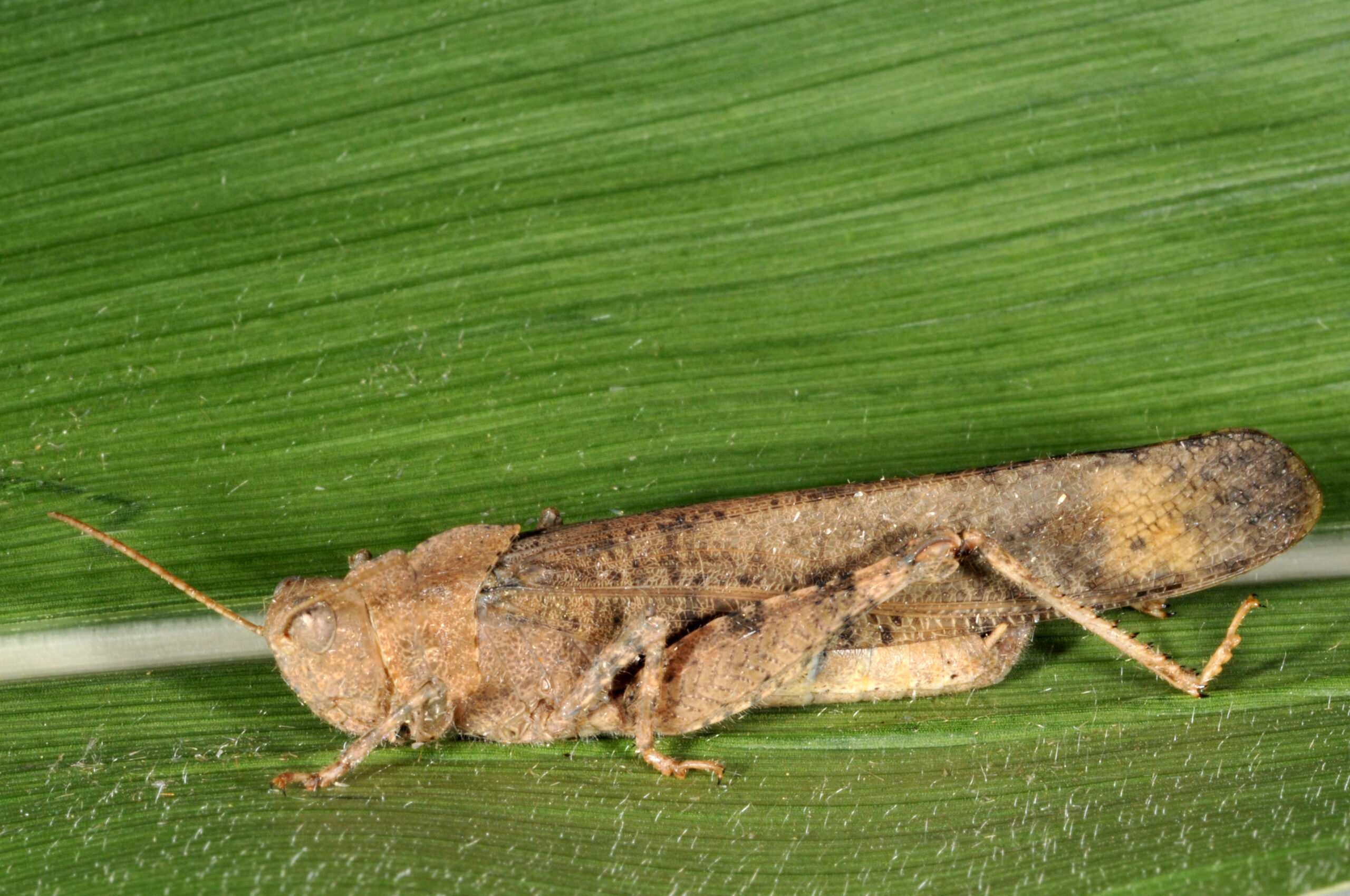Grasshoppers (Corn)
Melanoplus spp.
Search the Pest & Crop Newsletter

The ability to see these full-sized life-cycle images is currently disabled to resolve an issue.
Appearance and Life History

Photo by J. Obermeyer
Grasshoppers are general feeders on many field side plants and move to cultivated crops when conditions are favorable. Crop damage is likely to be greatest in years when dry weather accompanies high populations.
Grasshoppers (several species occur in Indiana) are brown to grayish-green jumping insects that are moderately long and have prominent heads and large compound eyes. The front pair of wings are narrow, leathery, and thickened. The hind pair are thin, broadly triangular, transparent, or sometimes brightly colored.
Nymphs generally resemble adults except for size and the absence of fully developed wings. The grasshoppers of importance in corn are up to 1-3/4 inches (44 mm) long when fully grown. Nymphs feed near where they merged until about the third or fourth nymph stage. If food is plentiful, they will remain in this area. Otherwise, they move to nearby vegetation, including cultivated crops.
Damage
Nymphs and adults will feed on corn in any plant growth stage, but usually are not observed until R1 to later stages as numbers increase. The outer rows of corn are usually the first attacked, but as the grasshoppers reach the adult stage they move further into the field eating the leaves, silks (may interfere with pollination), and ear tips. When grasshopper populations are high and damage is severe, they may only leave the leaf mid-ribs, pruned ears, and barren stalks.
Sampling Method

Photo by J. Obermeyer
- Conduct early and late season grasshopper surveys in favored egg laying areas (i.e., grass pastures, weedy water-ways, fence-rows, alfalfa and clover fields, small grain fields, etc.) bordering corn fields.
- If grasshoppers are noted around fields, walk into corn fields past the end-rows, checking for grasshopper activity.
- At 5 random locations in each field margin and/or infested field area, estimate the number of grasshoppers in approximately one square yard (90 cm square).
- Determine the average number of grasshoppers per square yard for the field margins and/or infested field areas. Note whether a majority of the grasshoppers are nymphs or adults.
- Continue to survey fields and field borders until populations are no longer threatening.
Management Guidelines

Photo by J. Obermeyer
Corn Insect Control Recommendations:
- Treatment of field margins for grasshoppers may be advisable if an average of 15 or more nymphs or 8 or more adults per square yard (90 cm square) are found in field border areas. If field crops are under drought stress, the numbers may need to be lowered. Treatment of infested portions of the field may be advisable if an average of 3 or more grasshoppers per square yard (90 cm square) are counted within a part of a field.

Grasshopper numbers can be drastically reduced by naturally occurring fungal pathogens.
